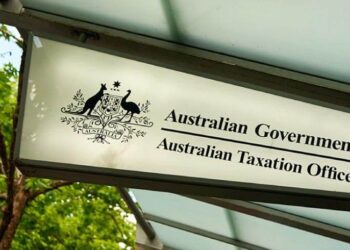From 1 July 2021, if a non-arm’s length capital gain is made by a segregated current pension asset on or after 1 July 2021, it will be treated as non-arm’s length income (“NALI”), meaning that it will be taxed at the highest marginal rate of 45 per cent under section 295-550 of the Income Tax Assessment Act 1997 (“ITAA97”).
SUPERCentral special counsel Brian Hor said this will happen because an amendment to Treasury Laws Amendment (2020 Measures No 6) Act 2020 will take effect from 1 July 2021 to correct an anomaly created by section 118‑320 of the ITAA97, which had the effect that any capital gain made from a segregated current pension asset was disregarded so that a capital gain arising from such assets would not be NALI.
“Before that date, a non-arm’s length capital gain which relates to an asset supporting a retirement phase income stream did not cause NALI due to a legal loophole, in that NALI only applies to ordinary income or statutory income and a ‘capital gain’ as such is actually neither ordinary income nor statutory income,” he said.
“On the other hand, a ‘net capital gain’ is brought in as statutory income, so that a net capital gain (if it is non-arm’s length) can be NALI.
“In this regard, section 118‑320 of the ITAA97 states that if a gain is made from a segregated current pension asset, the gain is simply disregarded. If the gain is disregarded, it cannot become a ‘net capital gain’ and therefore cannot become statutory income so that it also cannot become NALI.”
Mr Hor said the amendment corrects this situation by introducing subsection 118-320(2) that will ensure that non-arm’s length capital gains in relation to segregated current pension assets are no longer disregarded and are therefore treated as NALI. Under paragraphs 295-385(2)(a), 295-390(2)(a) and 295-400(2)(a), to the extent that the ordinary and statutory income of a complying superannuation fund is NALI, the income is not exempt current pension income.
“This means that the opportunity to take advantage of this legal loophole is closing, and fast,” he noted.
“For instance, if an SMSF purchased an asset on non-arm’s length terms (e.g. by acquiring it at a discount to its market value) and the SMSF is fully being used to pay an account-based pension and the asset is a segregated current pension asset, and the trustees plan to shortly sell the asset, the timing becomes of the essence.
“Put simply, if the trustees enter into a contract to sell the asset before 1 July 2021, any capital gain arising will be disregarded and will not be NALI. On the other hand, if the trustees enter into a contract to sell the asset on or after 1 July 2021, the capital gain would not be disregarded and thus would be treated as NALI.”
Given the unprecedented surge in the Australian residential property market since the beginning of this year, Mr Hor noted there may well be SMSFs holding residential property assets that have grown significantly in value.
This can also be considered especially if they were acquired during the property price slump that happened between July 2017 and May 2019 during which the median house price dropped by 8.4 per cent and with prestige markets being hit even harder with an average price drop of 22.5 per cent in Sydney and 32.1 per cent in Melbourne, according to recent CoreLogic data.
“If it is desired for a SMSF to sell such a property asset in order to take advantage of the current boom conditions, the decision to sell either before or after 1 July 2021 may have a huge impact on the after-tax position of the fund post sale,” Mr Hor said.
In an example provided, consider three years ago, Henry’s SMSF (which is 100 per cent in pension phase and has segregated pension assets) acquired a residential property that was business real property of his aunt Thelma for $400,000, whereas its true market value at the time actually was $700,000.
“After being approached by numerous real estate agents who have shown him convincing market research that in the current ‘fear of missing out’ climate the property (which just happens to be a very desirable prospect for a first home buyer eager to get into the property market) is now ‘conservatively estimated’ to be worth a handsome $1.4 million, so Henry decides to put it on the market,” Mr Hor explained.
“As properties are currently only taking around 14 days on the market before they are sold, Henry has some leeway in terms of when to list the property for sale.
“Ignoring stamp duty, legal fees and other usual costs of purchase and sale, on the face of it the net capital gain for the sale of the property at $1.4 million would be a cool $1 million. If Henry goes to auction and sells the property before 1 July this year, his fund will have made that million dollars totally tax free!”
On the other hand, Mr Hor noted if he waits until on or after 1 July to sell the property, then the fund will make a net capital gain (after deducting the one-third CGT discount) of $666,667.
“The NALI tax payable on that, at 45 per cent, will be $300,000 – just for delaying the sale until after 30 June,” he continued.
“Therefore, the trustees of any SMSF in full pension phase which is sitting on segregated pension assets which may produce a capital gain if sold should seriously consider whether or not to sell the assets before or after 1 July 2021, because the NALI tax consequences if they are sold on or after that date may be significant – and the deadline is fast approaching.”



I think Henry’s fund has a larger problem, ie by acquiring the property at a discount from Henry’s aunt the trustee of the SMSF will have breached s66 (Prohibition on acquiring assets from related parties), as the BRP was acquired from a related party not at market value. Penalty for that is imprisonment for up to 12 months. Not sure I would want to antagonise the ATO any further on that one.